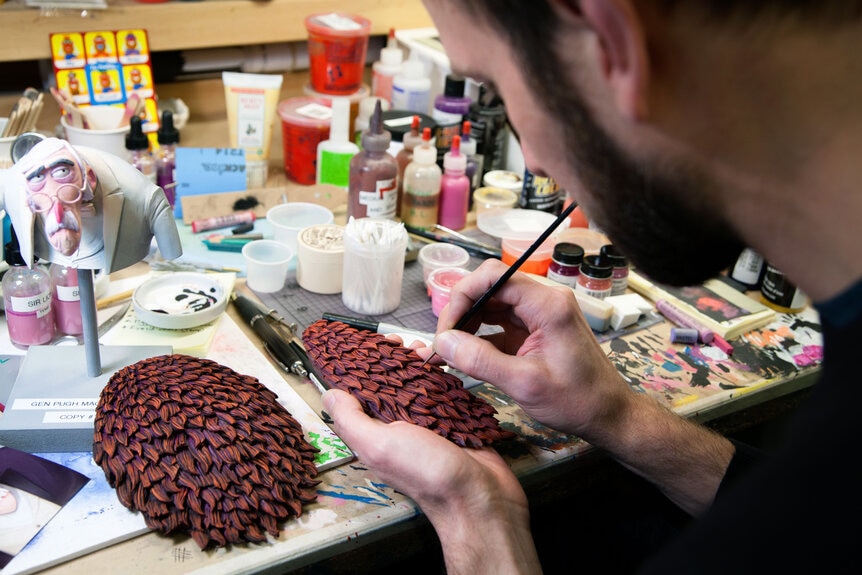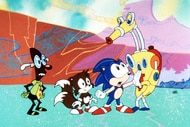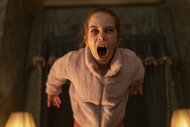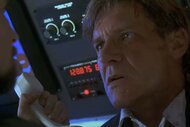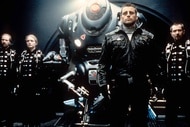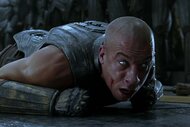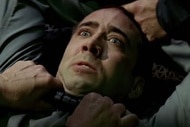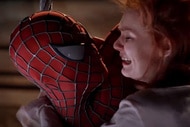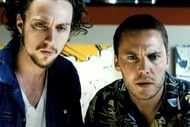Create a free profile to get unlimited access to exclusive videos, sweepstakes, and more!
Laika's Missing Link is a hairy avocado that took years and years to crack
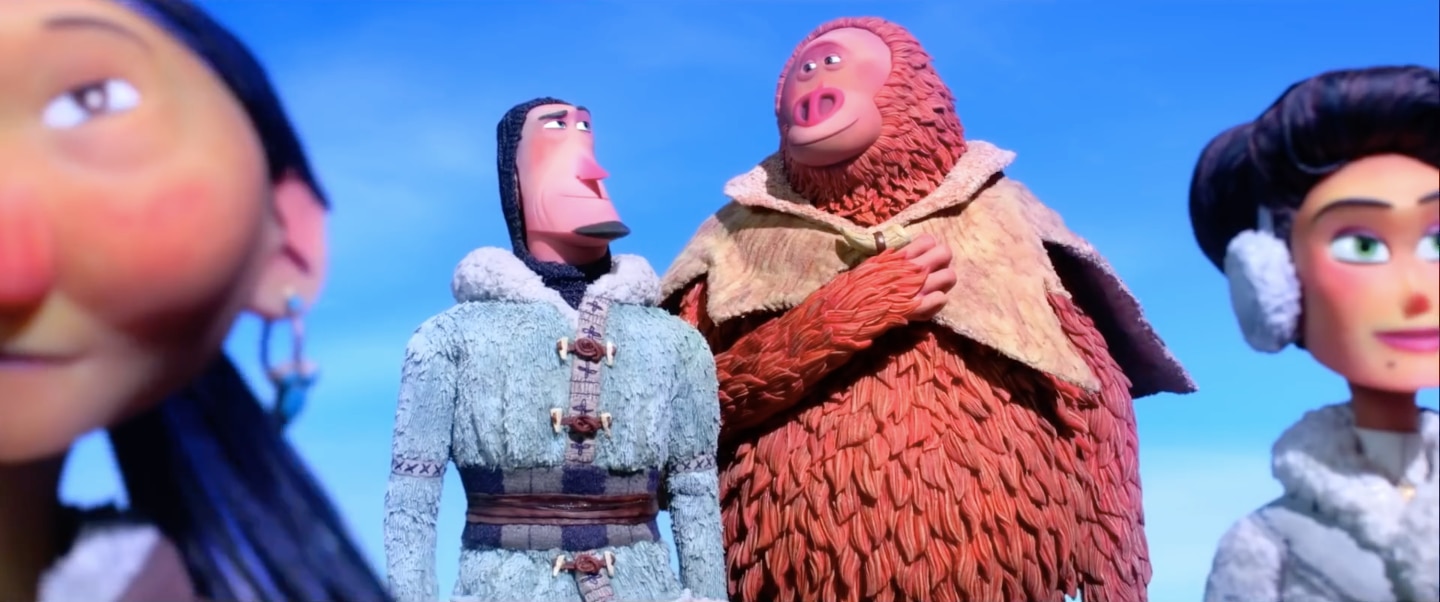
The filmmakers at the stop-motion animation studio Laika will openly admit that they call every single movie they make their most ambitious project yet, but they’ve also earned the right to do so. The company just put out its fifth film in just over a decade, and with about 200 full-time employees and around-the-calendar production, their pace alone suggests meticulousness in solving self-imposed challenges.
So when writer/director Chris Butler insists that the title character in his new film, Missing Link, is the most complicated puppet that the Oregon-based studio has ever produced, you tend to believe him. Laika has produced any number of supernatural characters and has dabbled in finely detailed animal puppets, and Link, an eight-foot-tall sasquatch with an even bigger heart, represented its own unique blend of the phylum, setting up a seemingly endless gauntlet of creative problems to solve.
In an era marked by the ascent of fully computerized animation, stop-motion has enjoyed a renaissance of sorts, and with that has come any number of spectacularly furry characters. Butler, who also directed the 2009 film Paranorman that helped kick off this decade of slow stop-motion revival, watched all of these movies with great interest and admiration, but no aesthetic jealousy.
Wes Anderson has made two stop-motion films, both about charming squads of small, hairy animals, the most recent of which, Isle of Dogs, was marked by incredible attention to detail, down to the wispy fur on each canine. Laika’s last movie, the Oscar-nominated Kubo and the Two Strings, had a similarly east Asian background design, but Butler wanted his own furry characters to stand on their own.
"There are two schools in stop motion," he tells SYFY WIRE. "You've got that school that is almost like taxidermy, it's real fur and you see that in Wes Anderson's stuff. It's beautiful and cool, but it wasn't something that I wanted to do. I wanted this world to be very stylized, very graphic. A lot of the art that I was looking at early on, I knew that this was going to be maybe even a little more cartoony than stuff that we'd done before. So it makes sense that we approach Link's hair in the same way."
From the outside, avoiding the painstaking application of thousands of little strands of fur would seem like a time-sizer. Not so much. At least there’s a roadmap for creating and animating real fibers; the only precedent Laika had for what Butler wanted to do with the goofy sasquatch (voiced by Zach Galifianakis) was the work the studio had done on a monkey character in Kubo. But that was a much more minor character and it moved in a much more apelike manner, and because design and physical motion are intrinsically linked in this kind of animation, Butler and his crew were in for a pre-production filled with trial and error.
"He spends a lot of the time naked and he moves around an awful lot," Butler says. "Then you've got to think about, well, how is this hair going to react? In the end, we sculpted it. We created a clay sculpt where every individual tuft is sculpted. And then we cast it and we created them out of silicon."
The individual silicon tufts were painstakingly applied, as can be seen in the video below, but that was just the beginning of the challenge.
The Mr. Link puppet looks good on its own, and is something to behold in the display cases that Laika and distributor Annapurna ship around for premieres and press events. In a digital world, its haptic qualities are priceless. But it’d mean nothing without realistic movement, which is how the studio has truly made its name.
Mr. Link is an ambling, silly monster that gets thrust on an adventure with an arrogant 19th-century British explorer (voiced by Hugh Jackman) and a brave widow (Zoe Saldana) and their journey takes them across North America and then on to the highest reaches of Mongolia in search of Shangri-La. They engage in train chases, saloon brawls, and perilous mountain hikes, and while the physical animation is performed by exacting devices tweaked ever so slightly in each frame, manipulating Link’s body was a perilous and daunting task.
"When you've got something that is silicon, and especially when it's in the shape of Link — we called him the hairy avocado — and you start moving it around, if he's bending over or stretching his arms, the silicon can do really weird stuff," Butler explains. "It can twist, it can crease. And as soon as it does that, the illusion is shattered and you know that what you're looking at is this rubber thing."
Maintaining that illusion in close-up shots was vital, especially when Link was in the rougher meteorological elements, because for however much people are willing to suspend their disbelief to buy into the globe-hopping adventures of a giant orange fur gentlemen with the voice of Zach Galifianakis at his most generous, any unrealistic movements or physical glitches could take them right out of it. And again, the creature’s body shape required the filmmaking team to invent new solutions, as well as implement advances in other techniques.
The foremost issue was the the hairy avocado’s lack of neck, which created a top-down challenge, as everything had to work in concert.
"He has what we call a cowl, almost like a comb with gaps in it so that he could twist around and all those individual layers of hair would move on top of each other," he says. "It was almost like tile or scales and it meant that the animator could move his head, move him around and the hair would react against itself. It was an impossible task. I think the amount of troubleshooting and exploration that went into that puppet was over a year."
This only covers the way the fur is supposed to move when prompted by Mr. Link’s own physical actions — one way to think of it is that it’s how he’d look running on a treadmill in a vacuum-sealed gym. And given the rough terrain and many different climates faced by the characters in Missing Link, the outdoor environment had just as much an impact on the character’s body as his own movement. Wind, rain, and other factors also had to be anticipated and accounted for, which is where the studio’s increasingly advanced digital department came in.
Butler and his team tried to figure out how to manipulate each plate of silicon fur in reaction to each of the story’s many environments. They explored moving the plates with hundreds of mini wires rigged to work in tandem, but they determined it was basically impossible. "No animator could have done it," Butler says. "They would still be animating today."
Instead, they decided to do the smallest animations in the computer. They marked the tips of the important plates with UV paint, and after the physical stop-motion animation, the VFX team scanned in the footage and got to work on the fur tips that were highlighted in blacklight shots. Each piece was hand-animated in the VFX computer program Nuke, a painstaking distortion process in and of itself that represented Laika’s increasingly integrated approach to animation.
The pinnacle of that interplay can be found in each of the characters’ faces. They recorded the actors’ dialogue first, so they could capture the essence of their presentation and the subtle movements of their mouths, which audiences could connect to their prominent voices. The puppets were hand-crafted, then scanned into the computer, where designers got to work on combining the characters with the notes they took from the actor footage.
"You sculpt the character, then that gets scanned, and the head that we have in the computer gets animated," Butler says. "So we create all the facial performance in the computer. Then that is sent to our 3D printers and we individually print out every frame, then each face is plugged on to the puppet for every frame on set."
There were over 100,000 faces made for the movie, stored in cases that could scar any child that discovers it without context.
On the other end of the spectrum were many of the environments. It’s all a matter of scale — sets can only be so big, and with characters in the foreground, it’s impossible to fully build out environments that create the correct scope. Instead of using matte paintings, which have been a staple of stop-motion animation, some backgrounds and settings were made digitally, with set extensions blended seamlessly into the physically built sets.
"Quite often what we'll do, if it's a digital set extension, we will build a miniature version of it," Butler says. "Say it's mountains, we made it's a tiny little mountain-scape that's been very crudely built. But then we will scan that, and that's what the digital team will work from. So even when we've got digital set extensions, they are normally informed by a physical object."

